It’s party time! In our family, spring and summer = Birthday Season. All six of us have birthdays in the months between April and August. The most recent birthday celebration belonged to my middle daughter. Guess how old she turned…..
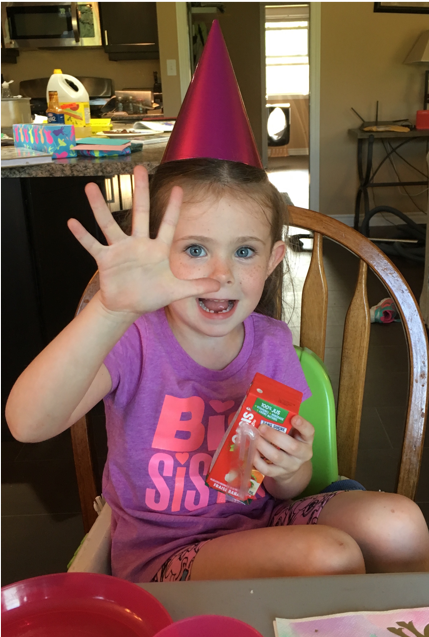
My youngest child has the last birthday – hers isn’t until August. She’s currently ….

She can’t wait to have her birthday. Not only does she have big plans for a party, but she doesn’t like to be so much “littler” than her sister!
When you looked at those fingers, did you count them? I bet not. You glanced at the quantity and you knew it said five for Mary and three for Clara. That’s called subitizing – seeing a quantity at a glance, without counting. As you can tell, it’s a skill that even very young children can acquire. In fact, there are fascinating research studies that show even babies can subitize in small quantities. Subitizing seems to come more naturally to some children than to others, but it can be taught to all children, and it’s worth investing your time to teach it to your children because it is a foundational math skill and a key component of good number sense.
And that takes us to the very first RightStart game that you can play with the younger child: Finger Cards in Order, game N2 in the Math Card Games book. It seems like a pretty simple game, however it’s excellent for children who are developing subitizing skills and understanding the relationship between the whole and the parts. Both of my little girls are working on this one now. And make sure your older children have this skill too!
To play the game, all you need is a set of finger cards. You can find these in the back of the RS2 RightStart Math Level A Lessons book; or you can download – just click on the picture below. If you want them to last a little longer, print on cardstock then laminate. I laminated our set when my oldest was three and it’s still going strong.
Print the cards, cut them apart, and lay them down in a random collection.

Ask your child, “Which card shows one?” She will generally choose the card with one finger pointing up.
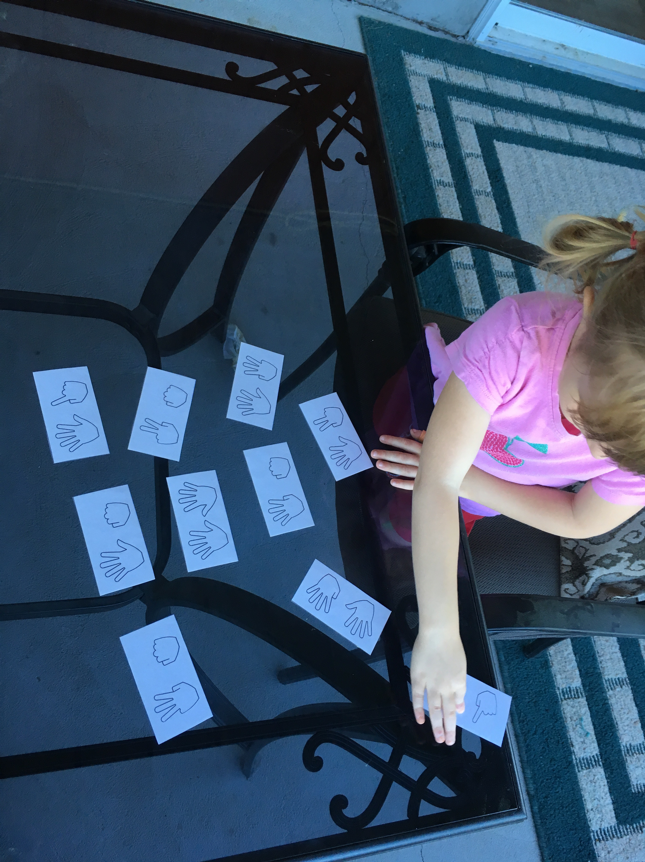
Have her move it to the side. Next ask her, “Which card shows two?” Tell her to put that card next to the first card.
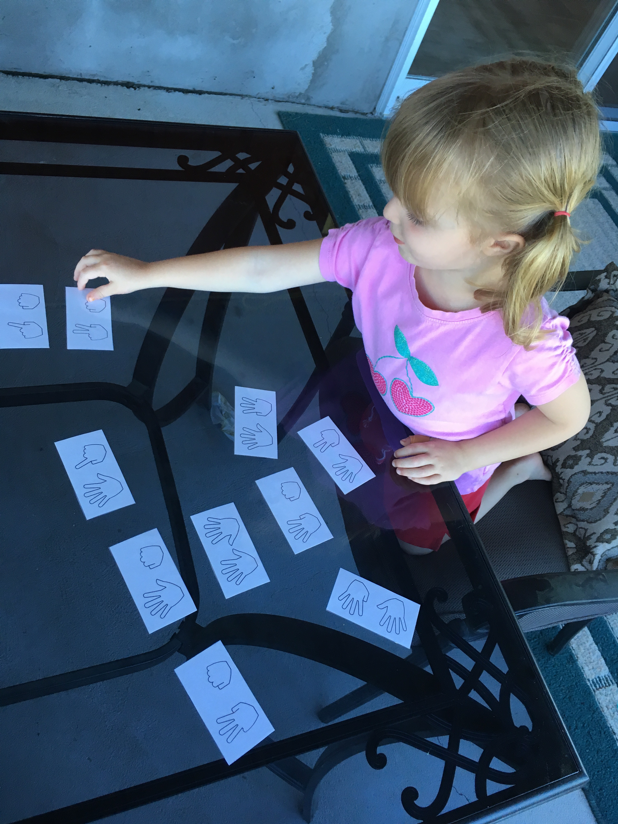
Keep going until she has all ten lined up!
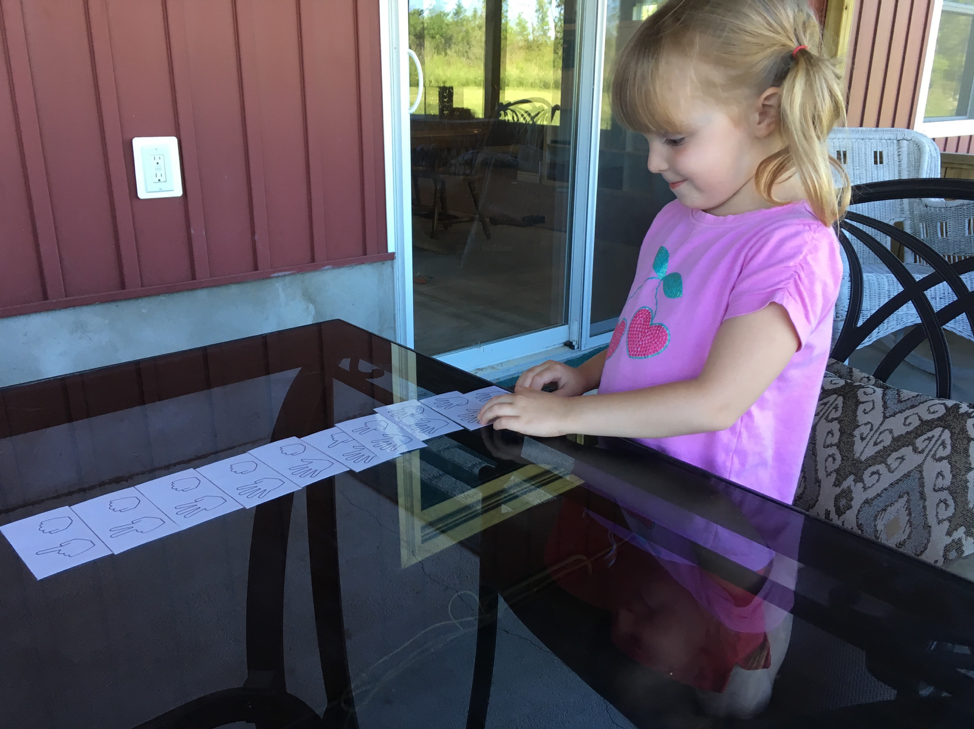
For some children, the finger cards after five are difficult. For adults, it’s easy to see that five and two is seven, but this is not innate for children – it’s something they have to learn.
When you first start playing this game, if your child is not familiar with what six to ten look like, show the quantity on your hand, allowing your child mirror you and the quantity on their hands. That will help them begin see the quantity at a glance. Discourage them from counting the fingers one by one.
When facing the child, put the five on your right hand and the rest of the quantity on your left hand. This allows the child to see the quantities from left to right and to mirror you, putting the five on their left hand and the remaining numbers on their right hand. Why left to right? Because we read from left to right!
For the very beginning child, you could just play the numbers one to five. My five-year-old is still working on subitizing numbers one to five, so I usually leave out the six to ten cards when we play.
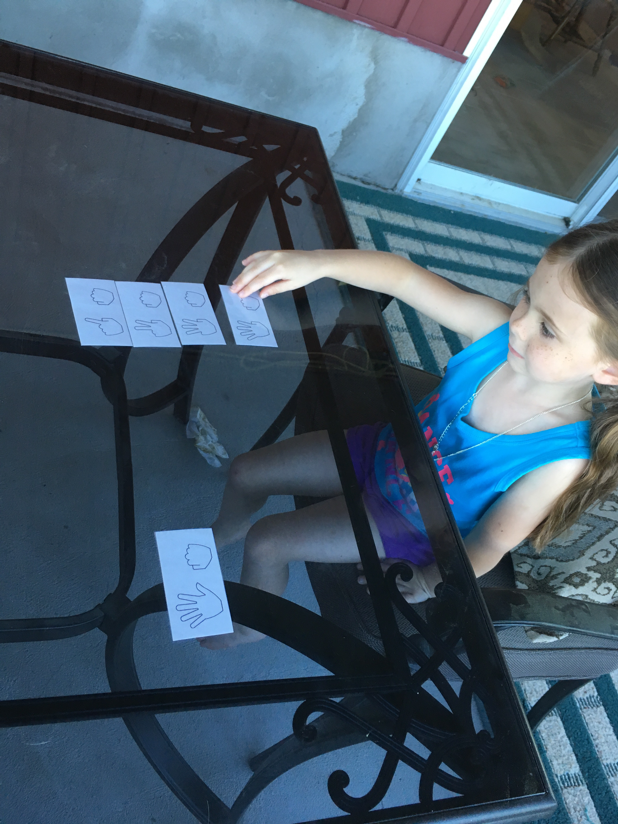
There are lots of fun variations on this game. Try hiding the cards around the room and have your child find them and then put them in order. Try putting them on the floor and have your child jump on them in order. How about taping the cards to the opposite wall of a large room and have your child run to the wall, get the “one” card, run back and put it down, run back to the wall, get the “two” card, run back and put it down, and so forth?
What fun variation can you dream of? Share your ideas below! See you next week…..

